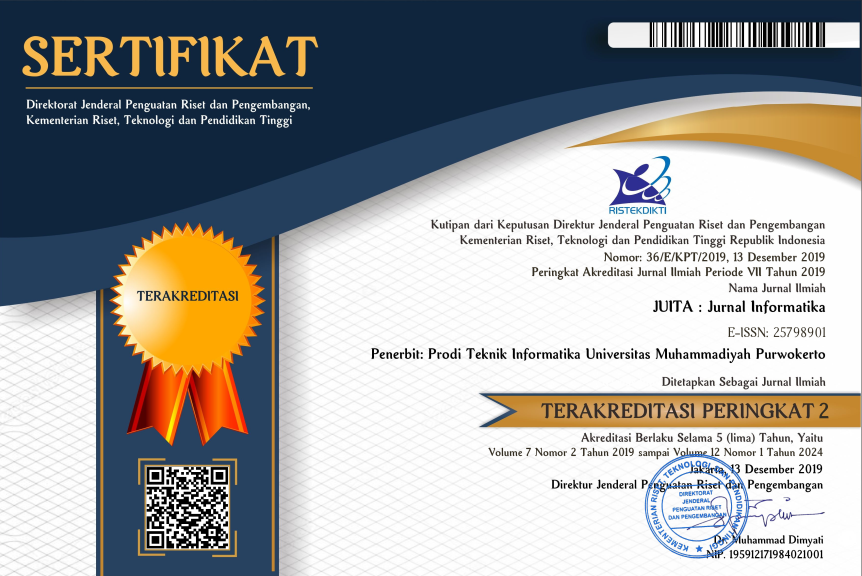Implementation of RESHOT Method to Create a Good User Experience in an Application
DOI:
https://doi.org/10.30595/juita.v11i2.17643Keywords:
user experience, user interface, human-centered interaction, RESHOT method, usabilityAbstract
In recent years User Experience (UX) has become something that must be implemented in making applications. Every application design practitioner has applied this discipline, but often they wonder how to simplify a user's journey flow by using applications and make it easier, faster, and simpler. This research aims to explain a method that can simplify the User Experience comprehensively. RESHOT is used (Refine the challenge, Remove, Shrink, Hide, Organize, Time). This method will make applications pay more attention to aspects that can increase user satisfaction. As a result, this study contributes to an explanation of simplifying the flow of uploading donor data files using the RESHOT method in the X blood donor data collection application. The results of streamlining the flow of uploading donor data files have been tested on five respondents and have a 100% user success rate in completing tasks with an average processing time of 14.5 seconds. In testing, there is a misclick rate of 10.7%. This is because the user wants to explore the designed application. And this is also a limitation of this study, namely not making the overall application design interaction.
References
[1] D. Norman, “The Definition of User Experience (UX),” Nelsen Norman Group, 2020. https://www.nngroup.com/articles/definition-user-experience/ (accessed Jan. 20, 2023).
[2] W. N. Wan Ahmad and N. Mohamad Ali, “THE IMPACT OF PERSUASIVE TECHNOLOGY ON USER EMOTIONAL EXPERIENCE AND USER EXPERIENCE OVER TIME,” Journal of Information and Communication Technology, Oct. 2018, doi: 10.32890/jict2018.17.4.8273.
[3] D. A. Norman, “Human-Centered Design Considered Harmful,” Interactions, vol. 12, no. 4, pp. 14–19, Jul. 2005, doi: 10.1145/1070960.1070976.
[4] Tullis and Albert, Measuring the user experience: collecting, analyzing, and presenting usability metrics, vol. 2. Elsevier, 2013. doi: 10.1016/C2011-0-00016-9.
[5] O. Vl. Bitkina, H. K. Kim, and J. Park, “Usability and user experience of medical devices: An overview of the current state, analysis methodologies, and future challenges,” Int J Ind Ergon, vol. 76, p. 102932, Mar. 2020, doi: 10.1016/j.ergon.2020.102932.
[6] D. Quiñones, C. Rusu, and V. Rusu, “A methodology to develop usability/user experience heuristics,” Comput Stand Interfaces, vol. 59, pp. 109–129, Aug. 2018, doi: 10.1016/j.csi.2018.03.002.
[7] C. Lallemand, G. Gronier, and V. Koenig, “User experience: A concept without consensus? Exploring practitioners’ perspectives through an international survey,” Comput Human Behav, vol. 43, pp. 35–48, Feb. 2015, doi: 10.1016/j.chb.2014.10.048.
[8] B. Pennington, S. Chapman, A. Fry, A. Deschenes, and C. G. McDonald, “Strategies to Improve the User Experience,” Serials Review, vol. 42, no. 1, pp. 47–58, Jan. 2016, doi: 10.1080/00987913.2016.1140614.
[9] E. Kaasinen et al., “Defining user experience goals to guide the design of industrial systems,” Behaviour & Information Technology, vol. 34, no. 10, pp. 976–991, Oct. 2015, doi: 10.1080/0144929X.2015.1035335.
[10] A. Mahmood, “Identifying the influence of various factor of apps on google play apps ratings,” Journal of Data, Information and Management, vol. 2, no. 1, pp. 15–23, Mar. 2020, doi: 10.1007/s42488-019-00015-w.
[11] L. Maioli, Fixing Bad UX Designs, 1st ed. Packt Publishing, 2018.
[12] M. Fairs, “Lack of design input is putting patients and doctors at risk, says physician,” dezeen, Apr. 21, 2020. https://www.dezeen.com/2020/04/21/design-input-healthcare-risk/ (accessed May 20, 2023).
[13] T. Kertis and D. Prochazkova, “Impacts of lacks in design of control systems in rail transportation,” in 2018 Smart City Symposium Prague (SCSP), IEEE, May 2018, pp. 1–6. doi: 10.1109/SCSP.2018.8402668.
[14] Baymard, “48 Cart Abandonment Rate Statistics 2023 – Cart & Checkout – Baymard Institute,” Baymard Institute , 2023. https://baymard.com/lists/cart-abandonment-rate (accessed Jan. 21, 2023).
[15] A. Lahiri, K. Cormican, and S. Sampaio, “Design thinking: From products to projects,” Procedia Comput Sci, vol. 181, pp. 141–148, 2021, doi: 10.1016/j.procs.2021.01.114.
[16] J. Gaulton, B. Crowe, and J. Sherman, “How Design Thinking and Quality Improvement Can Be Integrated into a ‘Human-Centered Quality Improvement’ Approach to Solve Problems in Perinatology,” Clin Perinatol, Mar. 2023, doi: 10.1016/j.clp.2023.01.006.
[17] J. Maeda, The Laws of Simplicity. Massachusetts Institute of Technology , 2006.
[18] B. Hasian, “Menyederhanakan UI (User Interface) dengan metode RESHOT,” Medium, 2021. https://medium.com/designchitchat/menyederhanakan-ui-user-interface-dengan-metode-reshot-69545384b0ee (accessed Jan. 22, 2023).
[19] R. Budiu, “Why 5 Participants Are Okay in a Qualitative Study, but Not in a Quantitative One,” Nielsen Norman Group, Jul. 2021. https://www.nngroup.com/articles/5-test-users-qual-quant/ (accessed Jan. 23, 2023).
[20] K. Marchese, “Swiss Army Knife: a sharp tool and design icon,” 2021. https://designwanted.com/swiss-army-knife-design-icon/ (accessed Jan. 23, 2023).
[21] B. Combes, “Techno Savvy and All-knowing or Techno-oriented?: Information-seeking Behaviour and the Net Generation?,” IASL Annual Conference Proceedings, Feb. 2021, doi: 10.29173/iasl7929.
Downloads
Published
How to Cite
Issue
Section
License

JUITA: Jurnal Informatika is licensed under a Creative Commons Attribution 4.0 International License.
















